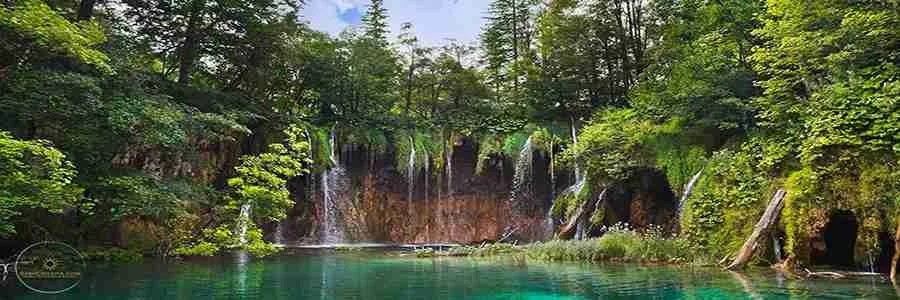The Church of St. Euphemia – Rovinj – Istria – Croatia, often known as the Basilica of St. Euphemia and by locals as the Church of St. Fuma, is a Baroque church located in the heart of the historic part of Rovinj and definitely the main tourist attraction of the town. The Church stands at the top of the hill in the old town and people built it in the 10th century on the remains of earlier Christian structures. Originally, it was dedicated to Saint George, but later it was dedicated to both Saints George and Euphemia, and now it is dedicated to Euphemia alone.
The relics of Saint Euphemia are preserved in a Roman sarcophagus from the sixth century. The church contains several treasures and works of art: Gothic statues from the 15th century, paintings from the 16th and the 17th centuries: Last Supper and Christ in the Gethsemane.
The bell tower resembles the tower of St Mark’s Basilica in Venice and was built during 1654–1680, to the plans by Antonio Manopola. Today, the belfry serves as a viewpoint, a tourist attraction that offers the best view of city of Rovinj and its surroundings. On top of this 60 m-high tower stands the statue of Saint Euphemia, serving as a wind vane.
The legend of St. Euphemia – Rovinj – Istra – Croatia
To have a better understanding of how such a big and impressive church came to be in Rovinj. We first have to explain who was St. Euphemia, and why she became the patron-saint of the town.
In the time of Tsar Diokletian many Christians were captured. Most persecuted and killed. Among them, a young girl called Euphemia from Chalcedon, a town in Asia Minor. She was born in 290 to a well-known patrician family.
Only fifteen years old when arrested by Diocletian’s soldiers. She refused to give up Christianity. Continuously tortured with cruelty (on a wheel). She still remained loyal to Christ. Finally, thrown to the lions who eventually killed her but did not devour her body.
History
There are no historical data about the life of this saint. It is known that she died on September 16, 304. Christians from Chalcedon preserved the body of the martyr until 620. The town later captured by the Persians. The sarcophagus with the body of St. Euphemia, then transferred to Constantinople. The sarcophagus, then placed in a magnificent church and built in her honor by Tsar Constantine. In 800, the Iconoclasts (icon-slashers) came to power. All of the relics of St. Euphemia had to be removed by the Christians.
It is hard to know what happened next. People say that a marble sarcophagus came floating in the sea to the coast of Rovinj after a big storm at dawn of July 13, 800. Known to many that the people of Rovinj tried to haul the sarcophagus to the Church of Saint George, but no one succeeded. Finally, answering to St. Euphemia’s call, a small boy with two little cows managed. He was able to haul the sarcophagus up the hill.
The people of Rovinj considered this a miracle. They proclaimed St. Euphemia the patron-saint of the town. St. Euphemia’s Day, celebrated on September 16. Many visitors come to Rovinj to participate in the grandiose celebration. The program takes place on the main square in Rovinj.

Top Hotels Istria 2023


